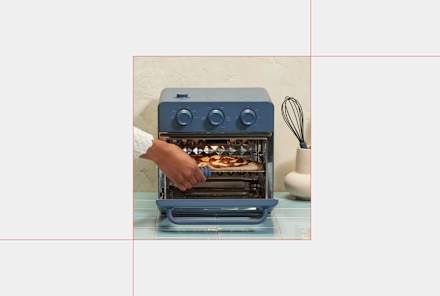Advertisement
5 Mistakes To Avoid When Doing Your Spring Cleaning


The way that many buildings these days are constructed makes regular cleaning an absolutely essential part of any healthy home.
Thanks to modern building practices that (rightfully) push for high energy efficiency, there's very little airflow transfer between indoor and outdoor environments. This means that a majority of the microscopic particles that manage to make their way inside our homes like allergens, mold spores, and mycotoxins, will remain there until they're actively removed. If you don't take steps to eliminate them, they'll continue to build up and reduce your indoor air quality.
Spring is the perfect time to get into the habit of deep cleaning your home on a consistent basis. As you do, avoid these five common cleaning mistakes to make the process easier and much more effective.
Mistake #1: Using bleach
Bleach is not effective at dealing with indoor contamination, and the harsh product can adversely affect indoor air quality. (It can also be downright toxic when improperly used.) While many people assume that bleach is the only cleaner strong enough to tackle issues like mold, this isn't the case. Bleach can leave mold particles behind, particularly on semiporous and porous surfaces, which means the problem will only come back. Here are the products I recommend using on mold instead.
Mistake #2: Not being proactive
There's no better time to go through your home with a fine-toothed comb than when you're giving it a solid cleaning. Things to look for include microbial growth, water damage, and structural issues with the interior and exterior of the home. The sooner you catch a problem, the faster you can get started on resolving it so that your home doesn't become a toxic hazard zone.
So, grab a flashlight and check for any visible issues or noticeable odors that could indicate a problem. Mold growth often creates a damp, musty, earthy, cigar-like smell due to the release of gases called microbial volatile organic compounds (MVOC). Here are some other signs of mold to be aware of.
Areas to pay close attention to include:
- The attic
- The basement
- Crawlspaces
- Grout and caulk
- Windowsills and doorframes
- Appliances (coffee maker, dishwasher, refrigerator water spout, blender, laundry machine, etc.)
- Exhaust vents
- Showerheads
- Sink faucets
- Mattresses
- Houseplants
- Fireplace
- The exterior of the building structure
Mistake #3: Cleaning but not decluttering
Turns out, being a minimalist is really good for your air quality. The more belongings we have, the more surfaces there are for dust and microscopic particles to settle. To welcome spring's fresh start, I recommend evaluating your belongings and asking yourself if you truly use each item before deciding whether to ultimately keep it or move on from it. This comprehensive guide to decluttering can help get you started.
Getting rid of clutter will stop dust from collecting on your belongings, ultimately translating to cleaner indoor air quality and improved well-being.
Mistake #4: Dealing with mold incorrectly
While cleaning, it's possible (and not uncommon) to stumble on mold growth somewhere throughout the home. A common mistake is using the wrong process to get rid of it. To properly remediate mold, you've got to resolve the issue that led to its growth in the first place and handle all of the contamination present. (This includes the active colony, dead mold particles, roots, spores, mycotoxins, and bacteria.) If anything is left behind, exposure continues, and any chronic health issues can persist.
Mistake #5: Neglecting your HVAC filters
Air filters are the first line of defense for the HVAC system and indoor air. They help eliminate dust and contaminants so that they don't continue to circulate throughout the indoor space. If they're due to be replaced, chances are that they're packed full of all sorts of particles. This will affect their ability to filter, leading to lower indoor air quality. It can also put a strain on the HVAC system as it works overtime to pull air through the clogged filters.
Changing them on time will help avoid this situation and ensure as much dust and particulate matter are removed as possible.
Spring—when many people transition from heat to air conditioning—is also a good time to schedule an HVAC technician to come out and service your system to ensure it's running properly and is not contaminated. They'll also test for mold to ensure that when you switch your unit, you're not accidentally blowing microscopic particles throughout your home. Condensation can build up in the unit with the temperature change, allowing hidden mold to begin growing. The technician should also clean the coil; make sure the blower, furnace, and cabinets are clean; and ensure that everything is operating correctly.
The takeaway.
Even if scrubbing isn't the most enjoyable way to spend a weekend, a clean home will be well worth it. Just avoid these five mistakes when doing your spring cleaning.
Watch Next
Enjoy some of our favorite clips from classes
Enjoy some of our favorite clips from classes
What Is Meditation?
Mindfulness/Spirituality | Light Watkins
Box Breathing
Mindfulness/Spirituality | Gwen Dittmar
What Breathwork Can Address
Mindfulness/Spirituality | Gwen Dittmar
The 8 Limbs of Yoga - What is Asana?
Yoga | Caley Alyssa
Two Standing Postures to Open Up Tight Hips
Yoga | Caley Alyssa
How Plants Can Optimize Athletic Performance
Nutrition | Rich Roll
What to Eat Before a Workout
Nutrition | Rich Roll
How Ayurveda Helps Us Navigate Modern Life
Nutrition | Sahara Rose
Messages About Love & Relationships
Love & Relationships | Esther Perel
Love Languages
Love & Relationships | Esther Perel


















